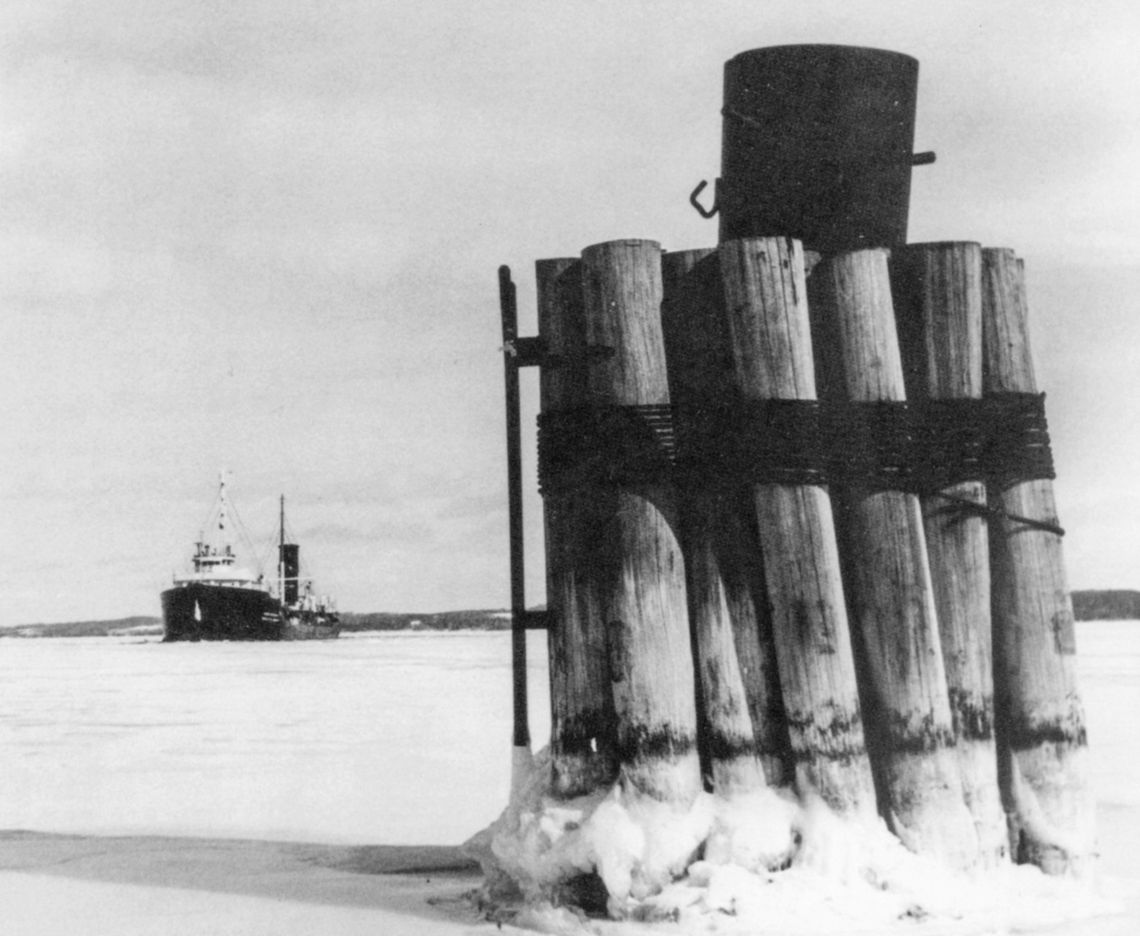The following news story and photo was taken from Kathleen Firestone’s book, “Meet Me at the Dock: in Greilickville, Grand Traverse Bay.”
When woodland Indians moved about the area of Grand Traverse Bay centuries ago, it was by canoe on the scarcely traveled waters or by footpath through the dense forests. Life was much quieter then, with only the sounds of nature mixed with the voices of native families. Grand Traverse Bay was saved from European exploration for a while, since entering the big bay from the waters of Lake Michigan held no clue of how long this inlet from the northern “grand traverse” would be.
In 1839 Henry Schoolcraft pointed Peter Dougherty to the tip of the Peninsula that became Old Mission, and that was the beginning of permanent contact between white settlers and Indian families along Grand Traverse Bay.
Rev. George Smith and his native friends at Waukazooville/ Northport traveled down to get supplies from Horace Boardman at the foot of the bay, just a short time before the Norris and Greilick families settled near Cedar Lake. The Norris and Greilick families settled near Cedar Lake. The Norris and Greilick sons worked with their fathers to establish the grist mill, sawmills and tannery in the southern part of Leelanau County, along the shore of West Bay. Lake commerce began almost immediately, and docks that were put out by the Greilicks, Reuben Goodrich, and Dan Carter added to the efficiency of manufacturing, selling and trading.
As the bigger docks of Sears, Standard Oil, and Sinclair were built (by Franklin Sears), larger ships and boats made their way to these docks that extended into deeper water. More people moved to Leelanau and Grand Traverse counties, bringing the need for more services, better roads and bridges, and more places for recreation. Elmwood Township citizens, social groups, and government agencies worked to maintain and improve the interior and the waterfront acres of the township.
When construction of a breakwall off Greilick Point, with shelter for commercial and recreational craft, was proposed by a group of Traverse City citizens, in 1947, members of the Elmwood Improvement Association urged “all-out” action to insure control of the waterfront. The Traverse City Chamber of Commerce had worked on the project for several months, and the U.S. Congress, under harbor appropriations, had to approve any plans that extended into the water.
The appropriation request was for $321,200 and was forwarded to Washington by Col. D.O. Elliott, Great Lakes District Engineer, following an aerial survey. While the Elmwood Improvement Association agreed with the project, Elmwood citizens wanted control to be kept in their own township and county.
One wish was for a public waterfront park where earth fill from dredging operations would be deposited. The original request of $321,200 was reduced, when Leelanau and Grand Traverse counties were required to pay part of the expense. In the spring of 1949, Elmwood Township in Leelanau, along with Grand Traverse County, began working toward an agreement to each pay $2,500 toward the Greilickville yacht anchorage.
The Elmwood Township Board supervised the dock and sheet piling construction, and a 75-foot wooden dock with 600 feet of sheet piling was built. The Army Corps of Engineers appropriated $316,000 to build a 1,300-foot breakwater and to dredge the harbor for a marine craft shelter basin.
By 1965 architectural plans for more improvements were drawn. Two breakwalls were constructed; one extending inland from the end of the earlier breakwater, and the other offshore of Brewery Creek and extending outward. The two new walls left an opening for boats and other watercraft to enter the dredged basin. Signal lights were placed on the outside corner of the original breakwater and the end of the new breakwalls.
The Traverse City Harbor, of which Greilickville was considered a part, was designated by the Army Corps of Engineers as a “Light Draft Federal Harbor.” Dredged sand and silt from the lake bottom was placed on either side of Brewery Creek and provided space for a temporary baseball diamond. With the new open space for creation, Elmwood Township was on its way to providing a multi-use waterfront.








